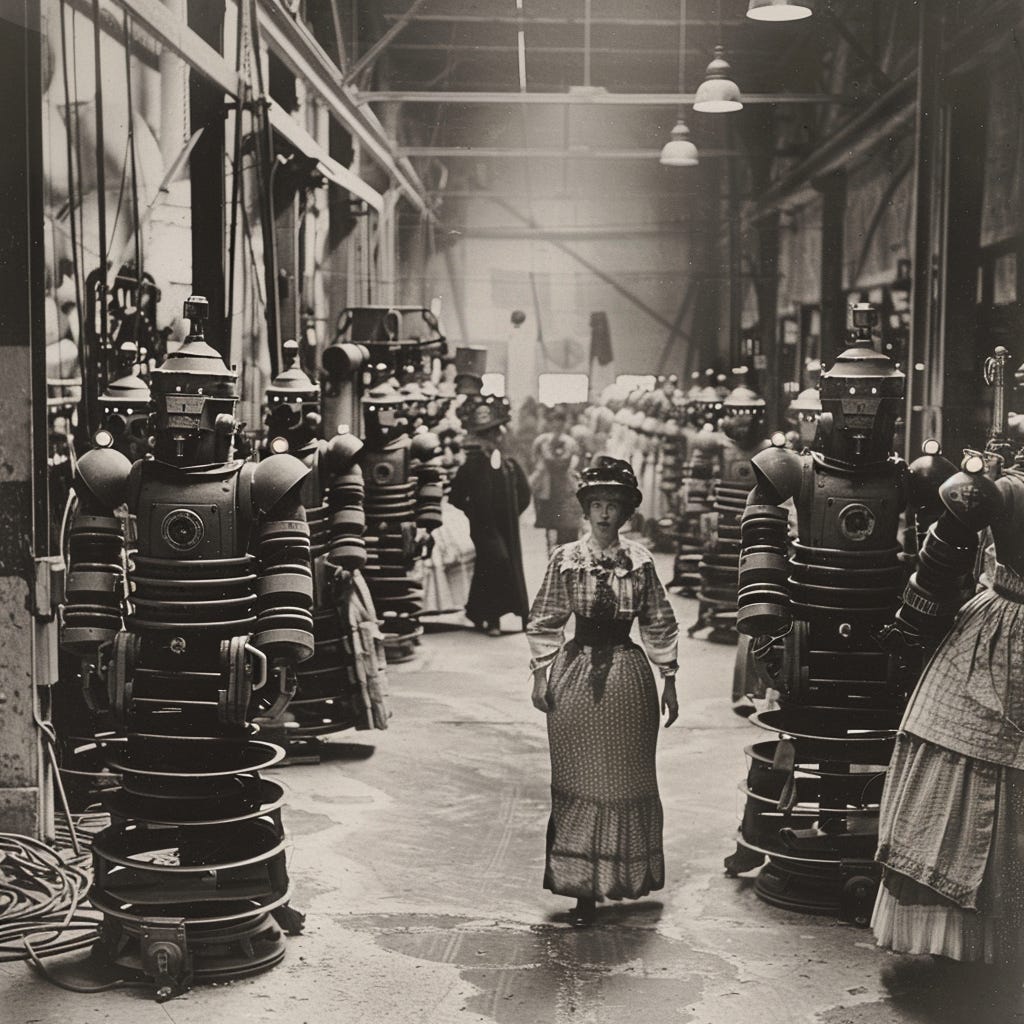Does the example of Klarna indicate the beginning of a quaternary sector in the economy?
Economic activities have traditionally been categorized into three distinct sectors: primary, secondary, and tertiary. In this article, we look at the impact of AI in the context of these sectors.
The conceptualization of the economy through primary, secondary, and tertiary sectors has provided a framework for understanding the evolution of labor and economic activities. However, the rapid advancements in artificial intelligence (AI) suggest the emergence of a new, fourth sector centered on information and technology. This sector, potentially dominated by AI, poses significant challenges for human work, redefining the nature of employment, skill requirements, and economic participation. This article explores these challenges, considering the implications of an AI-driven economic landscape.
The Three Sectors of the Economy
The division of the economy into three sectors allows for a granular analysis of labor distribution and economic activities:
- The Primary Sector: This sector encompasses activities directly related to natural resources, such as agriculture, mining, and fishing. Historically, the majority of the workforce was engaged in the primary sector, especially before the advent of technological advancements that allowed for significant productivity increases.
- The Secondary Sector: This sector involves the processing of raw materials from the primary sector into goods. Manufacturing, construction, and industry fall under this category. The Industrial Revolution marked a significant shift of labor from the primary to the secondary sector, driven by technological innovation and the mechanization of production.
- The Tertiary Sector: The service sector constitutes the tertiary category, including services such as retail, entertainment, financial services, and information technology. Over the past fifty years, there has been a noticeable shift of labor from the secondary to the tertiary sector, attributed to deindustrialization and the rise of service-based economies.
Historical Shifts and Revolutions
The transition of early civilizations from nomadic hunter-gatherers to settled agricultural societies can be seen as the first, agricultural revolution that fundamentally changed the primary sector. This shift brought about a significant influx of people into agricultural activities, laying the foundation for more complex societal structures.
The Industrial Revolution, viewed as the second major economic shift, transformed the secondary sector by making industrial production the dominant form of economic activity. This period saw a dramatic movement of the workforce from primary activities, such as agriculture and crafts, to industrial manufacturing, significantly enhancing productivity and altering the socio-economic landscape.
The advent of industrialization not only increased the productivity of the primary sector but also initiated a significant migration of workers to the burgeoning secondary sector. This movement was facilitated by the mechanization of production processes, which dramatically increased output and efficiency.
Table 11 shows the Workforce distribution in the three sector model based on data from Wikipedia2.
The Tertiary Sector's Ascendancy and AI's Role
In the last half-century, the increasing dominance of the tertiary sector has been observed, alongside a shift of the workforce from manufacturing to service-oriented roles. This transition is attributed to the availability of capacity and the high, albeit decreasing, productivity gains in manufacturing. The tertiary sector's growth has been bolstered by advancements in technology and the global demand for services.
The potential for a further revolution, particularly affecting the tertiary sector, is indicated by dramatic advances in artificial intelligence. While the secondary sector has seen productivity gains plateau with automation largely achieved through robotics, AI presents an opportunity to automate services.
This technological leap could transform non-scalable services into scalable software products.
This technological leap could transform non-scalable services into scalable software products, as demonstrated by companies like Klarna. Klarna's AI assistant, handling millions of customer service chats, exemplifies how AI can improve efficiency, customer satisfaction, and profitability while offering services in multiple languages around the clock3.

This transformation suggests that the impact of AI on services might extend beyond individual sectors, potentially leading to the emergence of a fourth sector focused on the information economy. This sector could encompass activities heavily reliant on data processing, digital services, and AI, marking a shift from traditional economic activities to those driven by information and technology.
Reflections on Automation, Productivity, and Sectoral Shifts
The perspectives of automation economists and the discourse on the growth paradox highlight a nuanced understanding of productivity and economic development. Instead of focusing solely on productivity gains in the secondary sector, it may be more insightful to consider the migration of activities from the tertiary back to the secondary sector, facilitated by the digitalization of services.
The emergence of an information-based fourth sector raises intriguing questions about the future of labor and the extent to which AI will dominate this new landscape. As we witness the redistribution of labor among these evolving sectors, the role of AI becomes increasingly central, suggesting a future where economic activities are predominantly driven by technological advancements rather than traditional labor.
In sum, the evolution of economic sectors through historical shifts and technological innovations has continuously reshaped the landscape of human labor and economic activities. With the advent of AI, we stand on the cusp of another significant transformation, potentially heralding a new era dominated by information and technology. This ongoing evolution challenges us to rethink the structure of our economies and the nature of work itself. In particular, the question arises as to how many people will work in this new sector, or whether it will be largely controlled by AI.
Which was created with LaTeX, the immediately working code for this provided by ChatGPT.
https://en.wikipedia.org/wiki/Three-sector_model
https://www.klarna.com/international/press/klarna-ai-assistant-handles-two-thirds-of-customer-service-chats-in-its-first-month/



